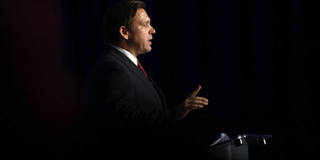The return of repressive state laws undoubtedly poses a grave threat to academic freedom at institutions of higher education across the United States. But the excessive influence of private donors, along with a tuition model that has turned students into customers, can be just as insidious.
CHICAGO – It has been a tough week for academic freedom in the United States. Florida Governor Ron DeSantis packed the board of a liberal arts college with allies determined to transform it into a conservative ideological bastion. Kenneth Roth, the former head of Human Rights Watch, was denied a fellowship at Harvard’s Kennedy School, allegedly over HRW’s criticism of Israel’s human-rights record. And Hamline University in Minnesota came under fire after an adjunct professor was dismissed for showing a centuries-old image of the Prophet Muhammad in an art history class.

CHICAGO – It has been a tough week for academic freedom in the United States. Florida Governor Ron DeSantis packed the board of a liberal arts college with allies determined to transform it into a conservative ideological bastion. Kenneth Roth, the former head of Human Rights Watch, was denied a fellowship at Harvard’s Kennedy School, allegedly over HRW’s criticism of Israel’s human-rights record. And Hamline University in Minnesota came under fire after an adjunct professor was dismissed for showing a centuries-old image of the Prophet Muhammad in an art history class.